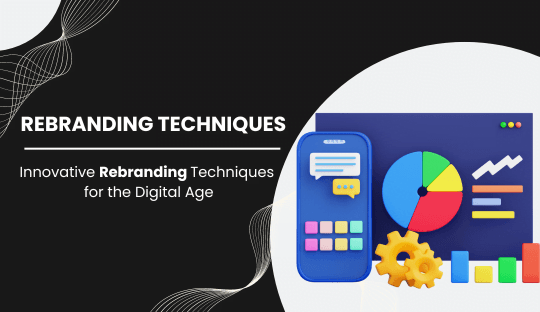
Innovative Rebranding Techniques for the Digital Age
In today’s rapidly evolving digital landscape, rebranding is more than just a visual facelift; it is a strategic move to stay relevant, engage with your audience, and drive business growth. For Flykez CO, a leading creative brand company in North Macedonia, embracing innovative rebranding techniques can set the stage for long-term success. This article explores cutting-edge strategies that Flykez CO can leverage to transform and elevate its brand.
Embrace Data-Driven Insights
1. Utilize Analytics for Informed Decisions
Effective rebranding starts with a deep understanding of your current brand perception and market position. Leveraging analytics tools to gather data on customer behavior, preferences, and trends is crucial. Analyze website traffic, social media engagement, and customer feedback to identify areas that need improvement and opportunities for growth.
2. Customer Segmentation
Segment your audience based on demographics, behavior, and preferences. Tailor your rebranding efforts to meet the unique needs and desires of each segment. This personalized approach can enhance customer satisfaction and loyalty.
Integrate Advanced Technologies
3. Leverage Artificial Intelligence
Artificial Intelligence (AI) can play a significant role in modern rebranding strategies. AI-powered tools can analyze vast amounts of data to identify patterns and trends, providing valuable insights into customer behavior. Use AI to automate and optimize digital marketing campaigns, ensuring that your rebranding messages reach the right audience at the right time.
4. Augmented Reality (AR) Experiences
Augmented Reality can create immersive and interactive experiences for your customers. For example, you can use AR to allow customers to visualize new product designs or brand elements in their real-world environment. This innovative approach can enhance engagement and leave a lasting impression.
Focus on Digital Presence
5. Website Redesign and Development
A website is often the first point of contact between a brand and its potential customers. Ensure that your website design and development align with your new brand identity. Focus on creating a user-friendly, visually appealing, and responsive website. Incorporate the latest design trends and ensure that the site is optimized for both desktop and mobile devices.
6. Search Engine Optimization (SEO)
SEO is essential for improving your brand’s online visibility. Optimize your website content with relevant keywords such as rebranding tips, rebranding campaign, brand evolution, effective rebranding, rebranding strategies, corporate rebranding, brand makeover, and brand refresh. Regularly update your content and use backlinks to authoritative sites to improve search engine rankings.
Enhance Visual Identity
7. Modernize Brand Design
A successful rebrand involves updating your brand’s visual elements to reflect its new identity. This includes redesigning your logo, color scheme, typography, and other brand assets. Ensure that the new design is modern, cohesive, and resonates with your target audience. Consistency across all touchpoints is key to maintaining a strong brand identity. Also Read About Rebranding vs. Refreshing: What’s the Difference?
8. Invest in Quality Visual Content
High-quality visual content is essential for engaging with your audience. Use professional photography, videos, infographics, and animations to convey your brand message effectively. Visual storytelling can make your brand more relatable and memorable.
Strengthen Digital Marketing
9. Social Media Rebranding
Social media platforms are powerful tools for rebranding. Update your social media profiles to reflect your new brand identity. Create engaging content that tells your rebranding story and connects with your audience on a personal level. Use targeted advertising to reach new and existing customers.
10. Influencer Partnerships
Collaborating with influencers can amplify your rebranding efforts. Choose influencers whose values align with your brand and who have a strong following in your target market. Their endorsement can build credibility and attract new customers.
Prioritize User Experience (UX)
11. Enhance UX Design
User experience is a critical component of rebranding. Ensure that your website and digital platforms provide an intuitive and enjoyable experience for users. Streamline navigation, improve load times, and make it easy for customers to find information and complete transactions.
12. Continuous Feedback Loop
Establish a continuous feedback loop with your customers to understand their experiences and identify areas for improvement. Use surveys, polls, and direct feedback to gather insights and make necessary adjustments to your rebranding strategy.
Conclusion
Rebranding in the digital age requires a strategic approach that leverages data, technology, and innovative marketing techniques. For Flykez CO, implementing these strategies can enhance brand visibility, engagement, and loyalty. By embracing a modernized visual identity, optimizing digital presence, and prioritizing user experience, Flykez CO can achieve a successful rebrand that resonates with its audience and drives business growth.
Embrace these rebranding techniques to position your company at the forefront of the industry and create a lasting impact in the digital age. For more information on how Flykez CO can help with your rebranding needs, visit www.flykez.com.
